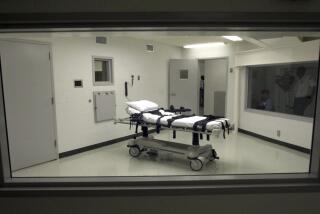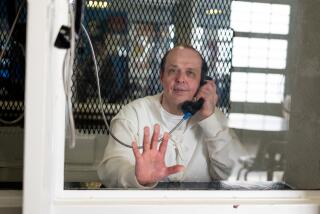Ruling Allows Witnesses to View Full Execution Process
- Share via
SAN FRANCISCO — Media and witnesses may view executions in their entirety, a federal judge ruled Wednesday, overturning California’s prison policy of allowing people to watch lethal injections only after the deadly chemicals begin flowing.
A suit was filed in 1996 by news organizations challenging the state’s policy of keeping a curtain drawn in the death chamber while the prisoner is led in and strapped down and needles and tubes are inserted.
The media groups, including the Associated Press, claimed that those procedures are part of the execution process that should be visible to witnesses.
The restrictions on observation were adopted by the state Corrections Department in 1996 shortly before state’s first lethal injection execution.
On Feb. 23, 1996, at William Bonin’s execution, a curtain was pushed back to reveal Bonin strapped to the table with needles and tubes inserted into his body.
Afterward, officials reported Bonin’s last words and described the difficulty a staff member had in inserting a needle into a vein.
The procedures were challenged by the Society of Professional Journalists and the California First Amendment Coalition. They argued that the state was effectively preventing the public from learning what happens in an execution.
Past and present San Quentin wardens supported use of the curtain.
More to Read
Sign up for Essential California
The most important California stories and recommendations in your inbox every morning.
You may occasionally receive promotional content from the Los Angeles Times.










